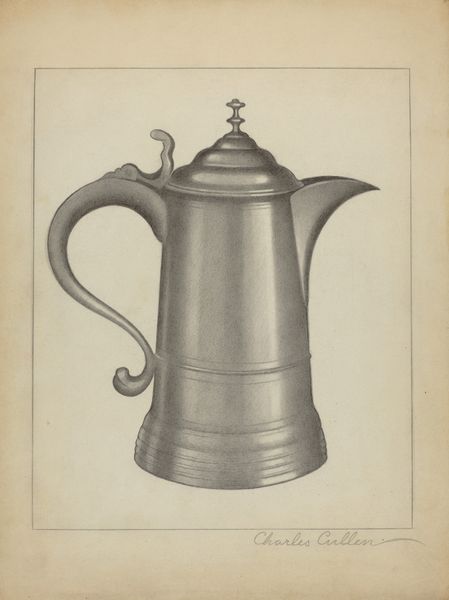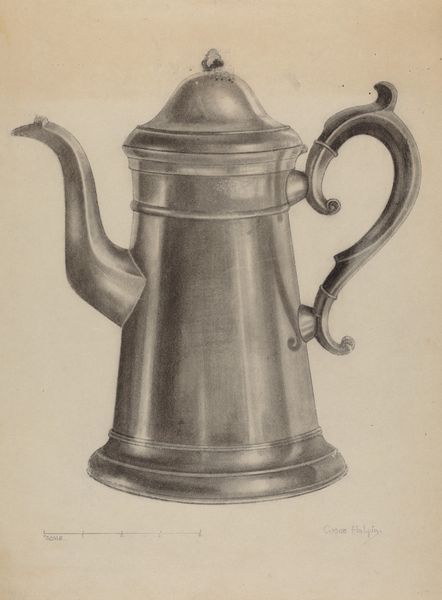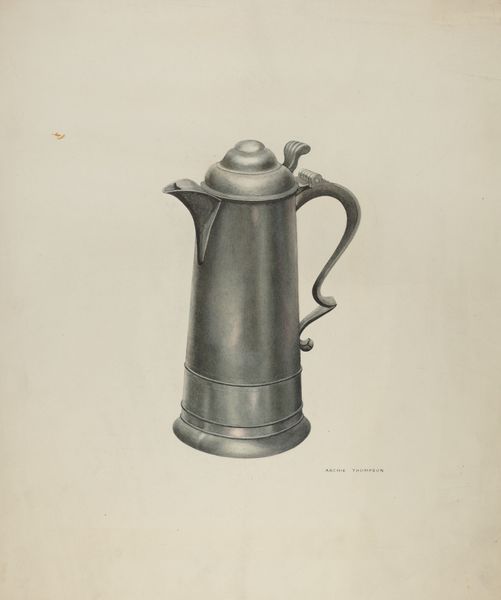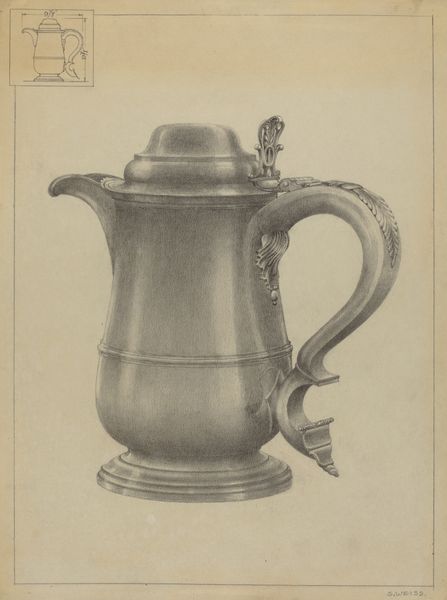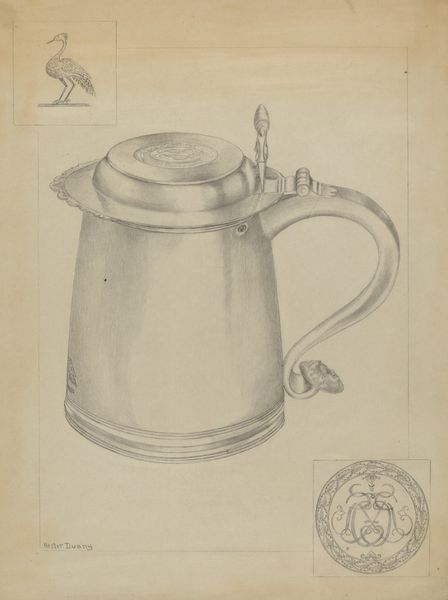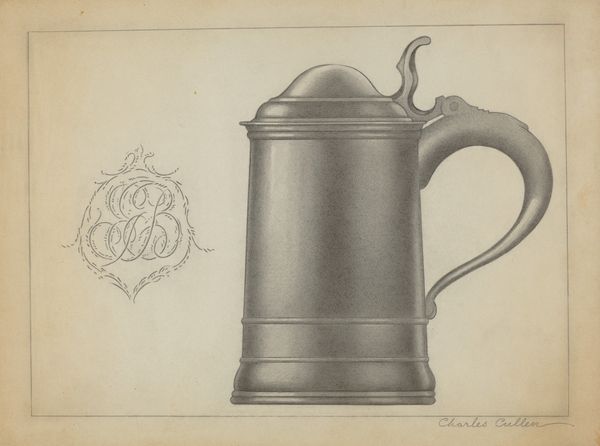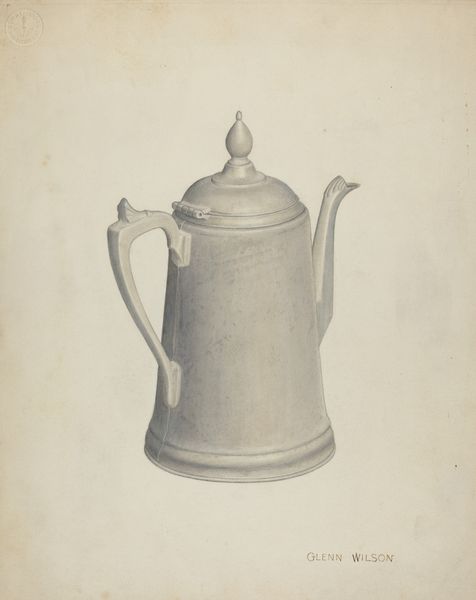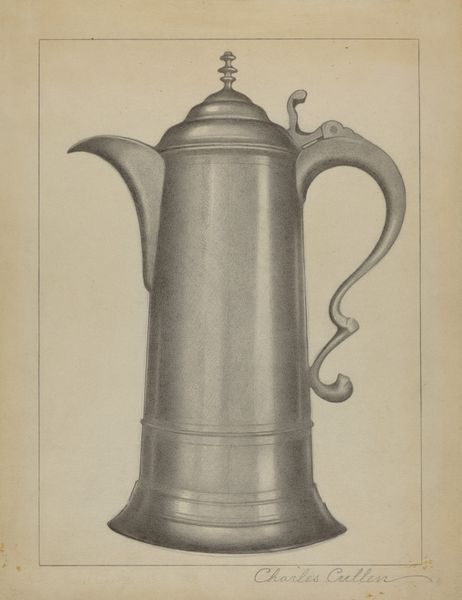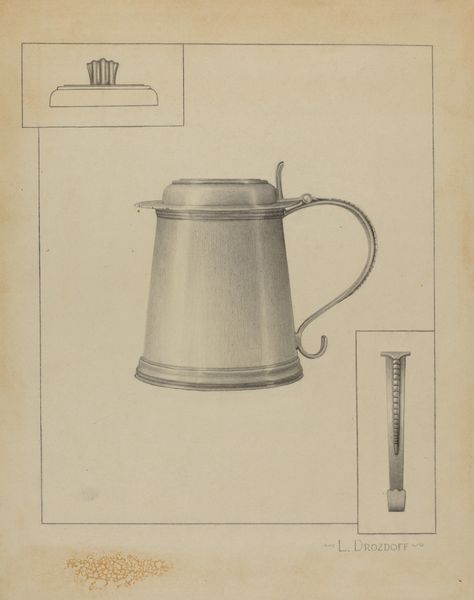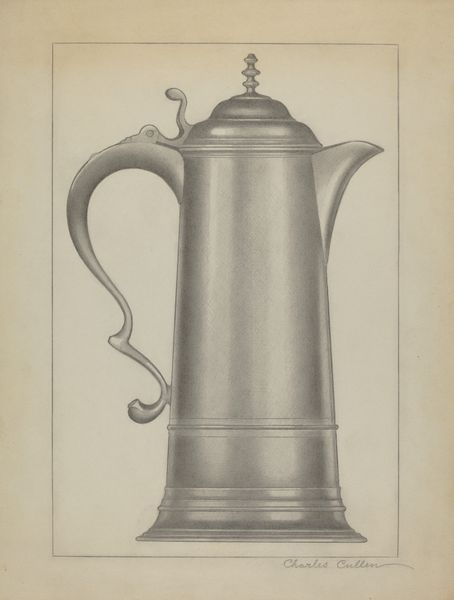
drawing, paper, pencil, graphite
#
drawing
#
paper
#
pencil
#
graphite
#
realism
Dimensions: overall: 29.9 x 22.2 cm (11 3/4 x 8 3/4 in.) Original IAD Object: 7 1/2" high; 6" in diameter
Copyright: National Gallery of Art: CC0 1.0
Editor: This is Charles Cullen's "Pewter Tankard," created around 1936 using pencil and graphite on paper. It’s a realistic rendering, almost photographic in its detail, but something about it feels... melancholy, maybe? What do you see in this piece, beyond its apparent simplicity? Curator: Beyond the skillful realism, I see a reflection of the interwar period's anxieties and shifting social landscapes. Consider the tankard itself – a utilitarian object elevated to art. Why? Perhaps it's a commentary on the working class and their diminishing access to leisure and community spaces amidst economic hardship. The artist, by focusing on such an everyday object, directs us to reflect on value. Editor: That’s interesting. So, you're saying the choice of subject matter is a political statement, in a way? Highlighting a class of people? Curator: Precisely! It’s about power dynamics and visibility. During this time, what objects and whose stories were considered worthy of representation? By portraying this seemingly mundane tankard with such care, Cullen subverts those hierarchies and invites us to question whose experiences matter. Moreover, we could consider how this reflects masculinities of the era: is this celebrating or critiquing the working man? Editor: I hadn’t thought of it like that. The detail almost romanticizes the object, but also maybe points to an absent figure? I do notice how the rendering of the handle itself has a graceful, almost baroque quality, quite distinct from the more utilitarian tankard body. It adds tension, right? Curator: Exactly! That tension is key. Cullen is using realism to both represent and critique the societal conditions of his time. The artwork subtly prompts viewers to reconsider what constitutes ‘art’ and whose lives are deemed valuable subjects for artistic expression. How do you think it resonates today? Editor: It definitely makes me think about who is missing from the artistic canon and the everyday objects that hold stories we often overlook. It is a somber statement. I hadn't initially connected those details, so thank you for bringing them to my attention. Curator: It is so vital to keep the conversation going, in relation to works like these. Hopefully our listeners will now feel the urge to dive in and add to that narrative, to challenge power structures in their own settings, in their own unique way.
Comments
No comments
Be the first to comment and join the conversation on the ultimate creative platform.
